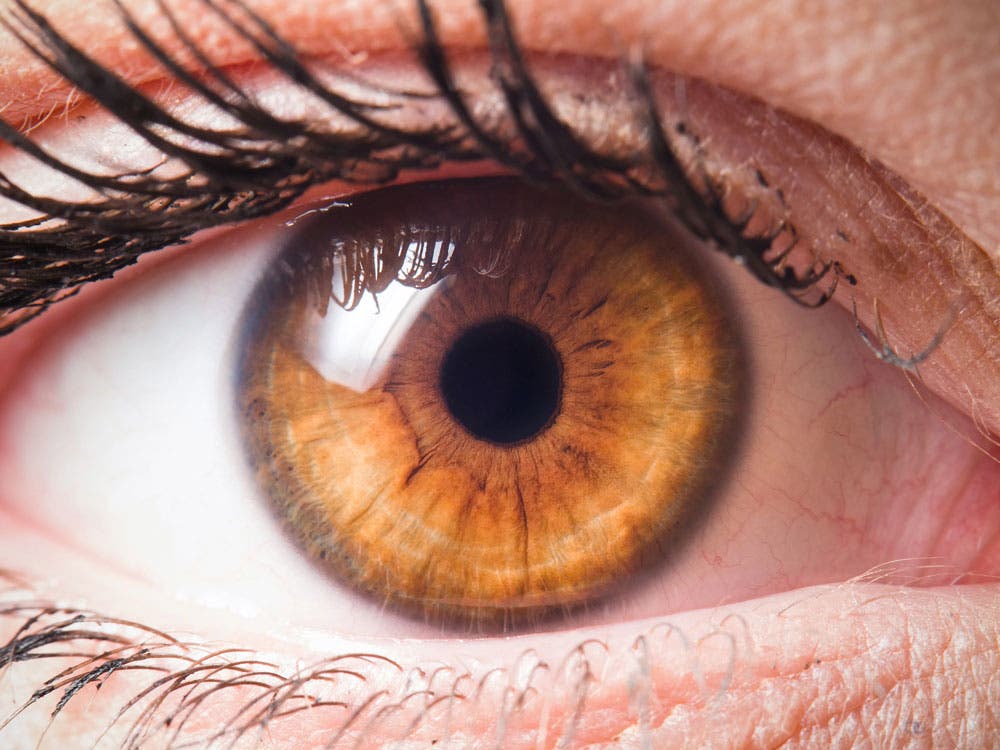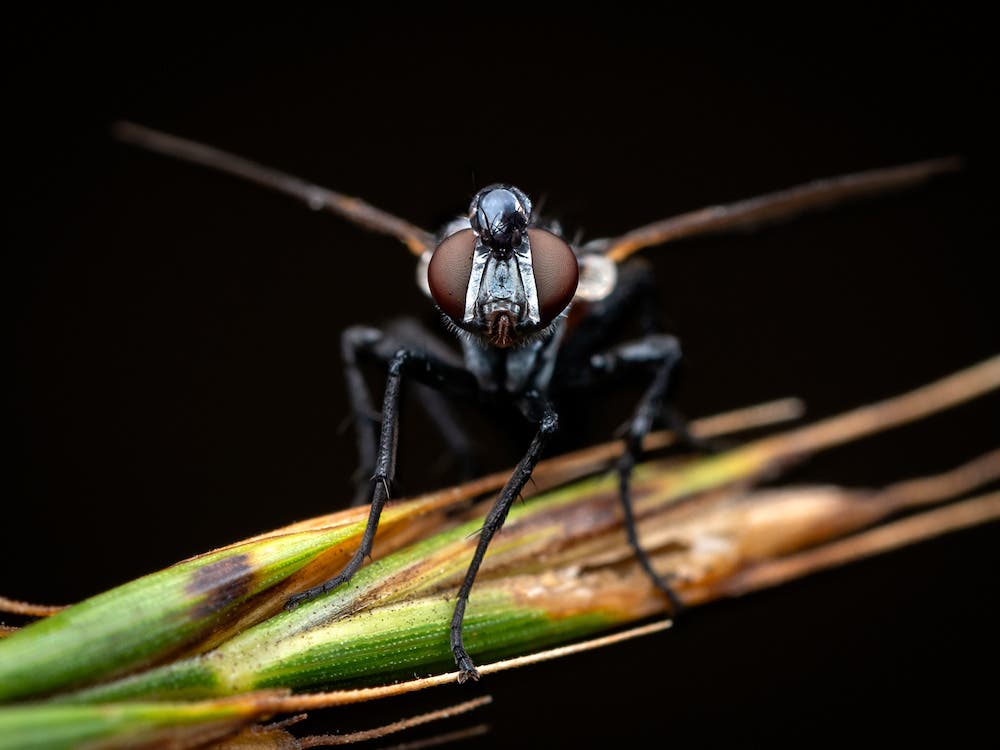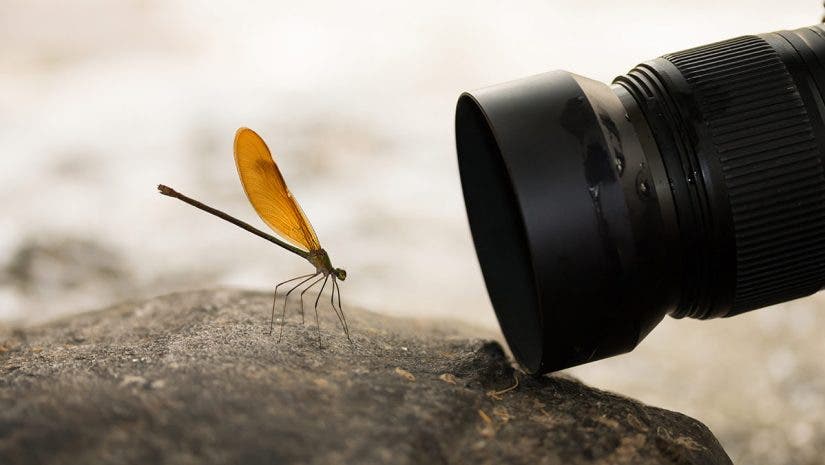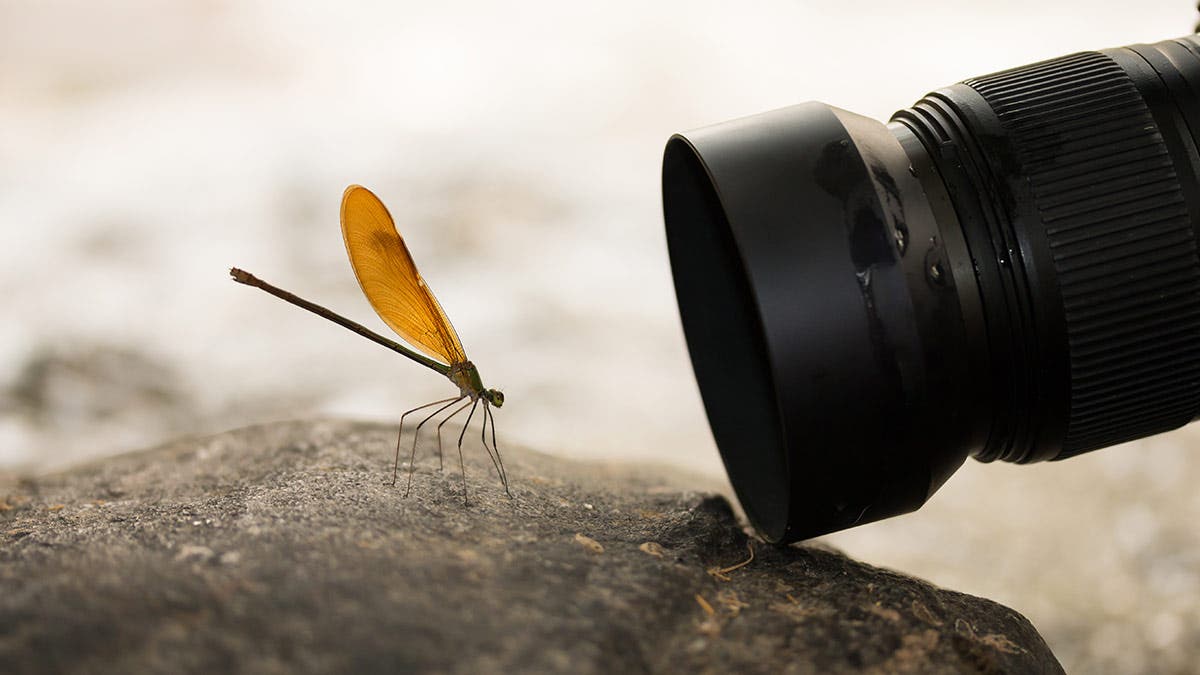As a newbie photographer, you’ve probably been experimenting heavily with your camera and playing around with different compositions, lighting techniques, and of course, different subjects and background settings. And now, in the interest of furthering your photography journey, you’re considering going macro, which means it’s time to invest in a macro lens.
What Is Macro Photography?
Macro photography is all about exploring tiny worlds through shooting extreme close-up photos of minuscule objects like small insects, flowers, or water droplets. Many consider it a fascinating branch of photography. It allows for viewing some of the things that are seen every day from an extremely close, almost otherworldly perspective.
So that you can shoot true macro, you’re going to need one important tool: a specialized camera lens that offers superior magnification capabilities—aptly called a macro lens. You may be able to replicate the same results with certain accessories for macro photography such as a reversing ring (which allows you to mount a regular lens on your camera backward to replicate a macro lens) or an inexpensive close-up lens filter, but a dedicated macro lens will always be your best bet.
As a newbie, you probably have a lot of questions. What differentiates a macro lens from other lenses? Is it the same as a zoom or telephoto lens? What focal length should it be? What is the magnification on a true macro lens? Or, what does a macro camera lens do?
Before you can learn how to shoot macro, you need to learn about the tools you’ll need and how you can use them to the best of their abilities. But first, let’s answer the basic question about macro shooting: “What is a macro lens?”

What is a macro lens?
A macro lens is a dedicated camera lens that is optically optimized to handle extremely close focusing distances. It can take sharp, highly detailed images of microscopic subjects. It typically has a magnification ratio of 1:1 and a minimum focusing distance of around 12 inches (30 centimeters) or less.
Unlike other lenses, macros are capable of high reproduction ratios. This means that the ratio of the subject size on the sensor plane is similar or greater than the actual size of the subject in real life.
What is a macro lens used for?
Obviously, macro lenses are used for shooting close-ups. But what does a macro lens do apart from taking tack-sharp images of tiny subjects?
Many believe that macros aren’t all that versatile, but that’s really not the case. First off, it’s a great lens for newborn photography. It’s especially great when photographing tiny details like the baby’s eyelashes, fingers, or toes. It’s also a great lens for product photography, especially if you’re dealing with smaller products.
Your macro lens can also act as a portrait lens. It actually works well for portraiture because it captures amazing detail. It also allows you to achieve correct focus even when you stand very close to the subject. Plus, the macro lens comes in focal lengths that are also ideal for portraits.
What is the best focal length for a macro lens?
Macro lenses also have a wide range of focal lengths. But since macro photography works with extremely close focusing distances, the best lenses are typically long-barreled and are usually no shorter than 40 to 60mm.
Macro focal lengths and their different uses:
- 45 to 65mm: best macro lens focal length for product photography, shooting small subjects that you can get very close to without scaring it away, and capturing scenes that require a natural background perspective
- 90 to 105mm: best macro lens focal length for shooting insects, small animals, flowers, plants, and other small subjects that you can still shoot from a comfortable distance
- 150 to 200mm: best macro lens focal length for shooting insects and other small subjects that require you to be farther away while still maintaining the closest focusing distance
- Variable focal length – best macro lens focal length for multipurpose macro shooting
Ideally, your macro lens should be a prime—the lens should have a fixed focal length. Macros come in both zoom and prime varieties, but a prime is the better choice if you want 1:1 magnification. In general, macro zooms are not truly macro. Although, they can still offer high magnification ratios and extremely close focusing distances.
What is the magnification on a true macro lens?
Macro lenses have different magnification ratios, like 1:2 or 1:3. A true macro will always have a ratio of 1:1 to achieve the best possible results, which is the life-size reproduction of the subject. However, there are some macro camera lenses, like the Canon MP-E 65mm f/2.8 1-5x, that can also deliver 5:1 magnification (5x life-size) for even closer, more magnified shots.

When purchasing a dedicated macro, pay attention to the magnification ratio and minimum focusing distance. If you want true macro results, the best macro lens is one with a magnification ratio of 1:1 or higher.
Is a flat-field lens important for macro photography?
Another characteristic of a true macro lens is the “flat field” design. Other lenses, or curved-field lenses, have a plane of focus that is concave. This means that these lenses produce an effect where not everything in the image is in sharp focus. Either the center or the edges can appear extremely sharp and in perfect focus, but not both at the same time.
This problem is common for non-macro lenses, as they suffer from greater field curvature (also known as “Petzval field curvature”). This is an optical aberration wherein an object cannot be brought in complete focus on a flat image plane. It’s especially noticeable at very close working distances due to the shallow depth of field. This is why flat-field lenses make the best macro lenses. Significantly reduced (or completely eliminated) field curvature is crucial when photographing certain subjects for macro work, such as postage stamps or coins.
So, is having a flat-field macro important? It depends on your subject. For photographing mostly flat objects, such as a tiny piece of artwork, then it definitely pays to invest in a lens with highly minimized field curvature to ensure that you can keep the entire subject in focus. But for shooting subjects that are more 3D, or if you desire a bit of creative blur around the edges of your subject, then it may not matter as much.
How to tell how much field curvature a macro lens has:
The easiest way to check if a lens suffers from field curvature is to look at its MTF chart, which can usually be found on the product page of the manufacturer’s website.

The MTF chart provides data on the overall performance of a lens. It shows concrete data on its resolution, contrast, field curvature, and more. It may seem rather complicated, but you don’t necessarily need to know how to read MTF charts (although of course, it will be helpful for future lens purchases) to be able to tell how much field curvature it has.
If you want to know if a certain lens suffers from field curvature, simply look at the lines on the MTF chart. Take the chart comparison above, for example. The chart on the left shows the data for the AF-S Nikkor 28mm f/1.8G (Nikon wide-angle lens) and the chart on the right is for the AF-S Micro Nikkor 60mm f/2.8G ED (Nikon macro lens). Notice how the lines on the wide-angle’s MTF chart has more curves than the Nikon macro lens—this means that the 28mm has “wavy” field curvature, wherein the center and corners are sharp, but the mid-frame is slightly softer, and the extreme corners are very soft.
In simpler terms, the straighter the lines on the MTF chart are, the less field curvature it has.
What are the Advantages and Disadvantages of a Macro Lens?
The main advantage of a macro lens is reproducing a small subject at its actual size or larger. It allows you to focus at shorter distances and therefore capture a high level of details. You can use it for any type of photography that requires close-ups, from nature to portraiture and food photography.
Often a dedicated macro lens has a wide aperture opening, allowing you to create a shallow depth of field, which is great for hiding a busy background or creating the bokeh effect.
So, if you think the answer to “What is a macro lens?” is a specialized lens that you can only use to photograph insects and droplets, think again.
Macro lenses also work very well for photographing people and landscapes and give you much more artistic freedom. They also have a great image stabilization system that helps you take sharp photos while handholding the camera.
What for some photographers may seem an advantage, for others may seem a disadvantage. For example, dedicated macro lenses are often prime lenses with a fixed focal length, so you don’t have the flexibility to zoom with a macro lens.
Another complaint regards the weight and size of the lens. Macro lenses are very difficult to use at short distances because of the shallow depth of field you get when you get extremely close to your subject. Furthermore, they tend to be more expensive.
If you are a beginner who hasn’t settled for a specific photography style, you’ll find macro lenses less versatile than regular lenses. Not because they are, but because they have a steeper learning curve, and you need some practice to master them.

What is the Difference Between a Macro Lens and a Regular Lens?
Considering the price of a performing macro lens, “What does a macro lens do better than a regular lens?” is a legitimate question.
Dedicated macro lenses have a magnification ratio of at least 1:1, which allows you to fill the frame with a tiny subject and capture all its details. At the same time, they let you get very close to the subject because they have a short minimum focus distance.
Other lenses have lower magnification ratios and longer minimum focus distances. As a result, macro lenses can capture details barely visible to the human eye or other lenses.
How Can You Tell if a Lens is Macro?
The secret of true macro lies in the magnification ratio. If you know what the magnification on a true macro lens is, you know how to find the right lens.
Macro lenses have a magnification ratio of 1:1 or higher (e.g., 2:1, 5:1, 10:1), meaning your subject will be at least its natural size on the sensor. They also have a short minimum focusing distance, meaning you can get very close to the subject and still be able to focus.
Lens manufacturers add the word “macro” or “micro” to their lenses’ names to guide your shopping. However, some zoom lenses have a macro feature that allows you to get closer to your subject without it being real macro photography. To make sure you get a real macro lens, look for a magnification ratio of 1:1.
Looking to buy your first macro lens? Read our comprehensive buying guide on the best macro lenses for DSLR and mirrorless cameras.
Now that you know some of the most pertinent information there is to know about macro lenses, it’s time to learn how to shoot macro. To help you get started, check out our AdoramaTV episode on the basics of macro jewelry photography:






